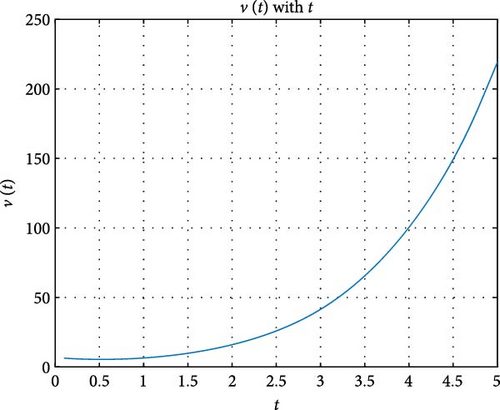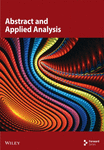Some New Application of Extended Wright Function
Abstract
This study introduces a novel extension of the Wright function using the Macdonald function as an extension of the Pochhammer symbol. We establish integral, differential, and generating function formulas for this new function. Furthermore, we apply it to fractional differential equations, providing integral transformations of Cauchy-type problems with graphical representation. The Mellin and Rishi transformations are also derived for the extended Wright function. These results offer new insights and potential applications in fractional calculus (FC), mathematical physics, and engineering.
MSC2020 Classification: 26A33, 33B15, 33C05, 65D20, 33E20, 91B25
1. Introduction and Preliminaries
The different special functions have grown to serve as essential tools in the field of science and technology. The ongoing advancement of engineering, applied mathematics, economics, mathematical physics, and finance gives rise to new classes of special functions as well as their extensions and generalizations. Researchers have been examining generalizations and extensions of a number of special functions in the last several decades, including the Wright, Bessel’s, Beta, Gamma functions, Mittag-Leffler function, and the hypergeometric function [1–5].
These special functions are important in physics, engineering, and mathematics because of their numerous applications, such as solving Schrödinger’s equation, characterizing wave functions, simulating heat and fluid flow, and analyzing signal processing, control systems, and electromagnetics. Extensions to Laplace and Fourier series include links to combinatorics and number theory. Recent advances in the generalization of special functions have led to new developments in fractional calculus (FC) and differential equations. Few works [6–8] have explored the Wright function in continuum physics, mathematical physics, and other complex physical processes. However, existing approaches lack a direct link with integral transformations like Mellin and Rishi transforms. Our work bridges this gap by introducing a more versatile extension of the Wright function, facilitating applications in solving fractional differential equations and related problems.
Some of the extensions of the above-mentioned functions, which are available in the literature, are defined in the following.
1.1. Extension of Gamma Function
If p = 0, then Equation (1) reduces to the classical Gamma functions [11].
1.2. Extension of Pochhammer Symbol
In this section, we revisit a few definitions concerning the classical Pochhammer symbol and its extensions.
1.3. Extended Wright Function
The function is an entire function of order .
2. Main Result
Theorem 1. The following integral formula holds true:
Proof. By using the integral representation of the extended Pochhammer symbol in the definition of extended Wright function, we get the following:
Theorem 2. The following integral formula holds true:
Proof. Proof of Equation (11) is trivial for m = 0. If we consider m ≠ 0, then we have the following:
The desired theorem assertion is obtained through differentiation up to n times.
3. Families of Generating Function Relation
Theorem 3. The following generating function holds:
Proof. Considering the left-hand side and using the definition of the generalized Wright function, we have the following:
Theorem 4. The following generating functions hold true:
Proof. Beginning with the left-hand side of the equation and using Equation (9), we have the following:
Theorem 5. The following generating functions hold true:
Proof. Considering the left-hand side of Equation (19), after using Equations (9) and (14), we have the following:
Theorem 6. The following generating functions hold true:
Proof. Using Equation (9) on the left-hand side with some suitable changes, we have the following:
4. Integral Transform of
Several significant integral transforms for the extended Wright function have been obtained in this section.
4.1. Mellin Transform
Theorem 7. The following Mellin transform representation for the extended Wright function (9) holds true:
Proof. Using the definition of Mellin transform and Equation (9), in Equation (23), with the help of Equation (6), we may write the left side as follows:
4.2. Rishi Transforms
Theorem 8. The following Rishi transform representation for the extended Wright function (9) holds true:
Proof. Applying the Rishi transform to the extended Wright function, we get the following:
5. Generalized Fractional Derivative
An extension of classical calculus, FC applies the ideas of differentiation and integration to noninteger (fractional) orders. This field has drawn a lot of attention because of its strong modeling and simulation skills in a variety of fields, especially physics and engineering. It is frequently more accurate to use differential equations of arbitrary (noninteger) order to describe many physical rules. One prominent use of FC is in fractal systems, where it successfully tackles issues like fractal kinetics. A fundamental concept in FC, many special functions are widely used in fractal mathematics [17–20]. Here, we recall some basic definitions of FC.
The fractional Hilfer derivative, which is generalized by Dorrego and Cerutti [21] and Hilfer [22], is given in the following.
Theorem 9. Let f be the sufficiently well-behaved function which has its support in R+, (m − 1) < ϑ, β ≤ m, 0 ≤ ς ≤ 1, m ∈ N the Cauchy type problem:
Proof. Taking the Laplace transform on both sides of Equation (36) and using Equation (35), with the help of the given condition in Equation (37), then we have the following:

6. Conclusions
In the present investigation, we established an extended Wright function. Also, we presented some families of generating functions for the extended Wright function. We have observed that by letting ν = 0, the result derived in this paper will be reduced to the results of Srivastava, Çetinkaya, and Onur Kıymaz [12]. We have also developed the graphical representation of the Cauchy-type differential equation by using the concept of Laplace transforms. Future research into multidimensional cases or numerical algorithms for its computation may make use of the extension of the Wright function created here. Additionally, it can be used to solve a variety of fractional differential equation-based problems, including modeling anomalous diffusion processes, resolving integro-differential equations in fluid mechanics and thermodynamics, and many more.
Consent
The current study is not based on human or animal study, so no consent is required.
Conflicts of Interest
The authors declare no conflicts of interest.
Author Contributions
Methodology: E.M. and P.S. Supervision: R.G. and E.M. Writing–original draft: P.S. Formal analysis: D.L.S.
Funding
No funding was received for this research.
Open Research
Data Availability Statement
Data sharing does not apply to this article as no datasets were generated or analyzed during the current study.




